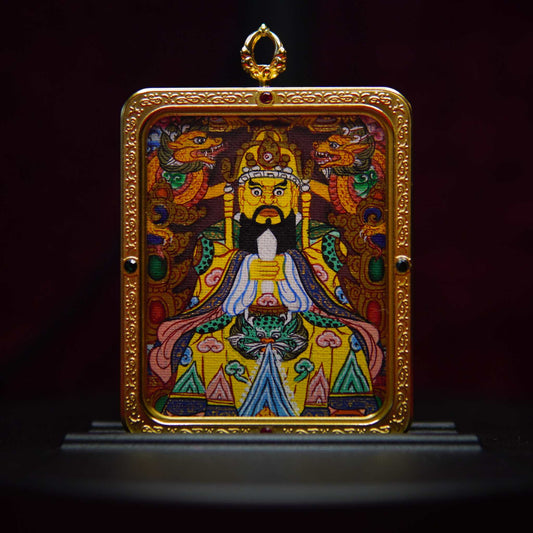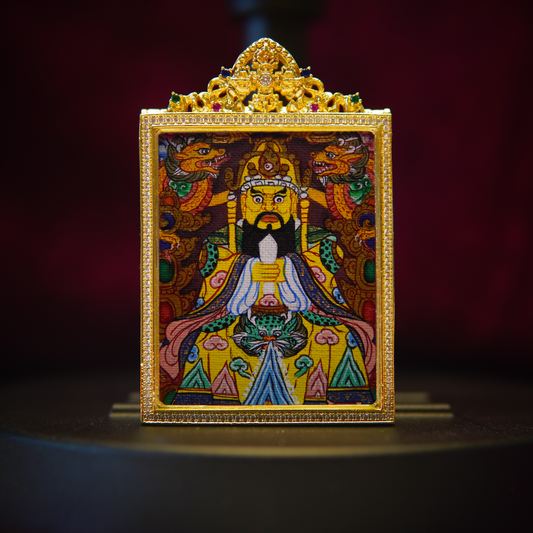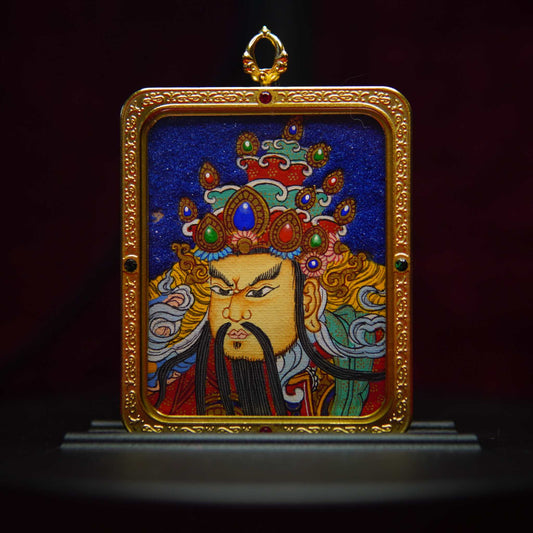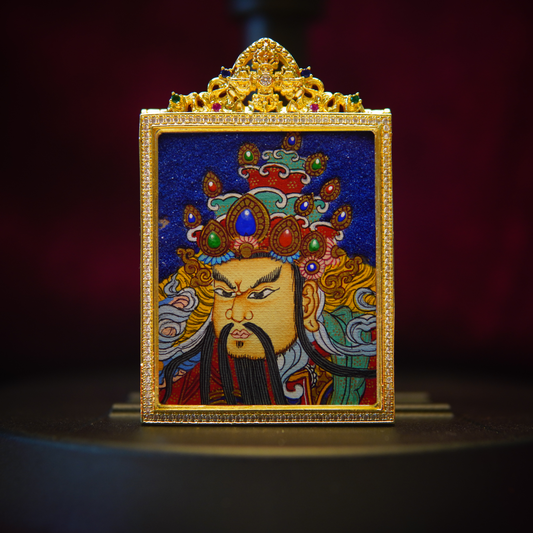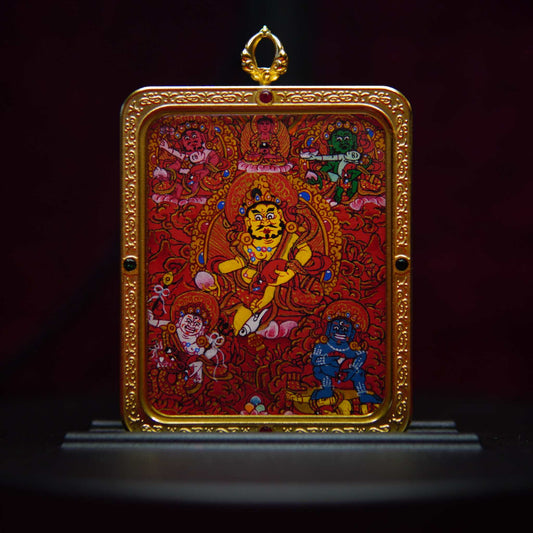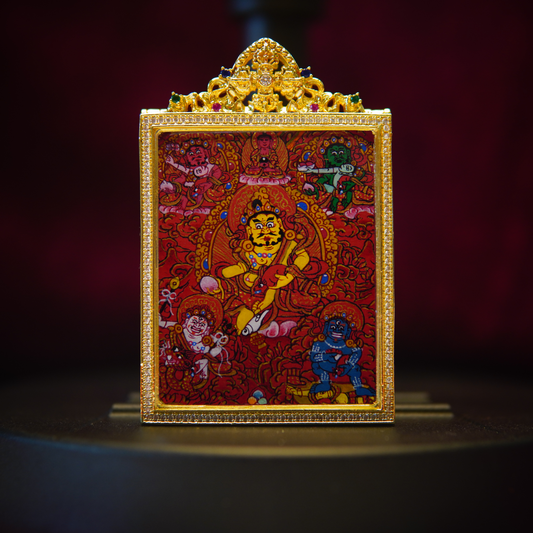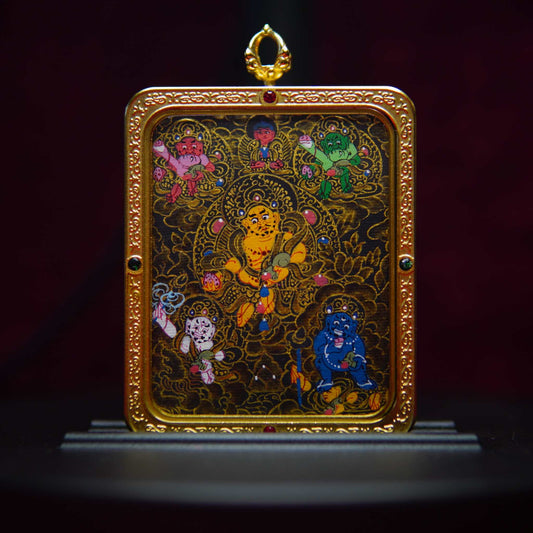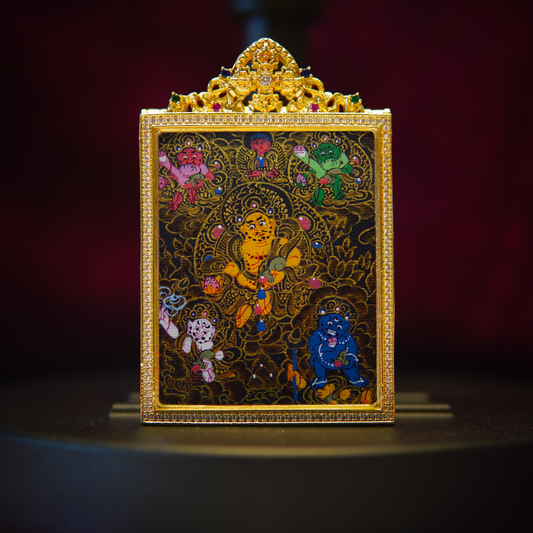What are the thangka painting schools?
chenHenryTibetan thangka art emerged after Buddhism was introduced into Tibet. With the spread of Buddhism in the Qinghai-Tibet Plateau and the integration with foreign culture and art, it has been continuously injected with fresh blood. On the basis of inheriting and updating the original artistic characteristics, it boldly absorbed the artistic essence of India, Nepal, the Central Plains and other ethnic minorities, becoming a unique art category in Tibetan art. With the passage of time, various painting styles have emerged, making Tibetan painting art more and more perfect and mature. Among the various styles of painting art, some are named after the founders, and some are named after the regions. Among these painting styles, there are the Nepal School, the Qiwugangba School, the Mentang School, the Qinze School and the Kachi School. The formation of these different styles of painting art has promoted the vigorous development of Tibetan Buddhist painting art and formed a prosperous scene of hundreds of schools of thought.

Nepal School: This school was formed during the Tubo Dynasty and prevailed from the 11th to the 13th century. During the Songtsen Gampo period, some outstanding Nepalese artists who accompanied the Nepalese princess to Tibet integrated the Nepalese artistic style into Tibetan art, forming the Nepalese school of thangka and murals. Although we have not seen the actual thangka objects and fragments left over from the Tubo period, the Tubo murals in the Jokhang Temple and the Tubo tomb paintings in Qinghai can show that the Tibetan painting style during this period has a strong Nepalese and Central Plains style. The painting art in the heartland of Tubo is mainly based on the Indo-Nepalese style, while in Dunhuang and eastern Tibet, due to geographical proximity and cultural integration, it is inevitably influenced more by the Han area. Generally speaking, the painting style of this period has obvious foreign influences. From the expression and conception of the subject matter, it can be seen that the paintings of the Tubo period pursued realism and lifelikeness. The painting expression techniques have shown a certain realistic style. The painting lines are smooth, the composition form is free, and warm colors are mainly used. The main statue in the center of the picture occupies a very prominent position, and the guardian statues are arranged in neat small squares around them. The statues are relatively simple, the body is stiff, the clothes are few and thin, and the decorations have a strong sense of heaviness.
Qiwugangba School of Painting: This school of painting was mainly popular in the 13th century in the U-Tsang region and was founded by Yaduo Qiwugangba Living Buddha. Yaduo Qiwugangba Living Buddha is one of the most famous painters in Tibetan history. He loved painting since he was a child and traveled around the country without any hardships. He learned and borrowed from the Nepalese painting style that was popular in various parts of Tibet at that time, and absorbed the nutrition of folk art. Finally, he founded the unique Qiwugangba School of Painting. The characteristics of this school of painting are that it inherits certain characteristics of painting during the Tubo period and the partition period, adds the expression techniques of the national art, and thus strongly reflects the inherent aesthetic consciousness of the Tibetan people. It has made improvements in the posture lines, face shape and facial expressions of the static and angry gods. The color is heavy and gorgeous, the overall color feels moist and gorgeous, and pays attention to the changes in light and dark colors, pays attention to the use of contrasting colors, and has delicate brushwork. The postures of various gods tend to be smoother, the expressions are more majestic, and the clothes and decorations are more rich and varied.

Miantang School of Painting: This school is the most influential school of painting in Tibet since the 15th century. It was founded by the painter Mian La Donzhu. He was born in a place called Miantang in Lhozha County. He was smart since childhood and had a strong interest in painting. Later, he met the painter Duoba Zhaxi Jiebo in the Sakya area, learned painting from him, and became one of the most proficient painters at that time.
Mian La Donzhu not only has superb painting skills, but also has made outstanding achievements in art theory. His masterpiece "The Wish-fulfilling Treasure of Statue Measurement" discusses in detail the measurement of statues in painting and sculpture, points out the errors in statue measurement in some books and the consequences caused by them, and explains the practical methods of Tibetan painting. He also learned from many others and founded the "Miantang Qinmo" school of painting (Old Miantang School). The school's statue-making method is strict. Compared with the traditional block expression, it pays special attention to the use of lines. The lines are neat and smooth, the colors are lively and bright, and the changes are rich. The style of the Old Mentang School of Painting inherited the Indian-Nepalese painting style, but added landscapes and floral patterns with local characteristics to the background treatment. The lines are symmetrical and precise, and the light colors are outlined with gold lines, which are gorgeous and colorful.
This school of painting has produced many talents and superb skills. The famous painter Chen Gawa Bandan Luozhui Sangbu Living Buddha during the period of the Third Dalai Lama Sonam Gyatso (mid-16th century) and the famous painters Lhoza Tenzin Norbu and Naze Darlong Baigong during the period of the Fifth Dalai Lama Ngawang Lobsang Gyatso (mid-17th century) are all very accomplished masters. Among them, the Tenth Karmapa Choying Dorje and his contemporary Choying Gyatso Living Buddha are the most outstanding. The Tenth Karmapa Choying Dorje (1604-1674) was able to paint exquisite Buddha statues at the age of 8, and was also proficient in sculpture and embroidery techniques, and was known as a child prodigy. In his early years, he strictly followed the style of Menla Dondrub, but in the middle period, his style changed and he created a new style of the Kachi School. He had profound theoretical attainments and was an authority on the measurement of statues and sculpture materials at that time.
The painter Qu Yingjiacuo, who was active from the first year of Taichang in the Ming Dynasty to the fourth year of Kangxi in the Qing Dynasty (1620-1665), inherited the essence of the old Mentang School and absorbed some elements of Han painting. He created a new style and founded the "New Mentang School" and made important contributions to the development of the school. He worked for the fourth Panchen Lama, Lobsang Chokyi Gyaltsen, and later went to Lhasa to become the painter of the fifth Dalai Lama. His paintings are still preserved in Tashilhunpo Monastery and the Potala Palace. Qu Yingjiacuo constructed the basic pattern of the modern Mentang School, established contact with the Gelug Sect, obtained strong support in politics, religion and economy, and made immortal contributions to the development and growth of the school.

From the end of the 17th century to the beginning of the 18th century, the Mentang School entered its heyday, and excellent painters emerged in an endless stream. Most of the murals and thangkas that remain in the Potala Palace, Norbulingka, and the three major monasteries of Drepung, Sera, and Ganden in Lhasa were painted by the painters of the Mentang School. Tibetan painting matured and prospered when it developed into the New Mentang School. After several centuries of practice, Tibetan painters of all generations integrated the early popular Indo-Nepal style with the artistic elements of the Han Dynasty and the Ming and Qing Dynasties after the Yuan Dynasty, and gradually formed a unique religious painting style of the Tibetan people. The Mentang School can be said to be the culmination of this. Compared with the "Qinze School" with a strong Indo-Nepal style and the "Gachi School" with obvious influences from Han art, the paintings of the Mentang School present a purer local style and a more obvious sense of flexibility, and the national characteristics are also stronger. The black, golden, and red Tangs that appeared after the 17th century can particularly reflect the infinite charm of the lines of this school.
Qinze School: One of the three famous painting schools in Tibet, named after its founder, Gongga Gangdu Qinze Qinmo. The Chinze School of Painting was formed after the mid-15th century and was mainly popular in the Ngari and Shannan regions. Chinze Chinmo loved art since childhood and could accurately depict mountains, rivers, the sun, the moon, birds and animals when he was young. When he grew up, he was fascinated by Buddhist paintings. He learned from his teachers and formed his own style. His artistic style directly inherited the painting style popular in the Ngari region in the 14th century and made innovations. The emergence of the Chinze School of Painting and the Mentang School of Painting put an end to the Indo-Nepalese painting style popular in the U-Tsang region from the 14th century to the first half of the 15th century, and made important contributions to the formation and development of the local Tibetan painting style in the late Middle Ages. The painting world collectively referred to these two schools as the "Men-Chin Schools".
The Chinze School of Painting maintained the characteristics of the Indo-Nepalese painting tradition in composition, with the main statue being larger, the focus being prominent, and the surrounding small statues being arranged in an orderly manner. However, in the expression of landscapes, the performance procedures of Han paintings have begun to be integrated, and the Tibetan painting language system has gradually formed. It is said that the murals in the Dorjedan Temple in Shannan were painted by Qinze Qinmo. There has always been a saying in the painting world that "one is civil and the other is martial" about the two schools of painting. The Mian school is more "civil" and the Qin school is more "martial". In comparison, the Qinze school is better at painting angry gods. Their faces are majestic and strong, the figures are plump and round, the images are steady and they often dance, there is stillness in the movement, hardness and softness are combined, and they have a masculine beauty; the colors are calm and full, they are good at using contrasting colors, which are strong and jumping, the color matching is delicate and exquisite, and the decorative flavor is strong. The Qinze school is also good at painting mandalas, with unique styles, exquisite depictions, and dense and gorgeous patterns, which are amazing. The Qinze school seems to have a close connection with the Tantric art that was quite popular in the Middle Ages in the rear Tibet.
The Qinze school of painting maintains the characteristics of the larger main deity in Nepalese painting in composition, but began to absorb the painting style of the Han area in landscape expression. This school of painting is particularly good at expressing wrathful images with masculine beauty, and the painting of mandalas is wonderful.
Karma Kachi School of Painting: This school is one of the three major schools of Tibetan thangka (Miantang School, Qinze School, Karma Kachi School), popular in the area centered on Ganzi Dege, Sichuan Province and Qamdo, Tibet. It is said to have been founded by Namkha Tashi Living Buddha in the 16th century. Namkha Tashi studied under Karma Miju Dorje, systematically learning Tibetan grammar and rhetoric and Buddhist knowledge, and later learned painting art. Once he went to Chubu Monastery and saw the silk thang given to the fifth Karmapa Deyin Xieba by Emperor Yongle of the Ming Dynasty. From then on, he imitated the style of this set of paintings and created a new school of painting, which was called the Kachi School of Painting. The eighth Karmapa Living Buddha Miju Dorje, who was a contemporary of Namkha Tashi, summarized the experience of his predecessors and himself and wrote "Measure the Sun Mirror", which laid the theoretical foundation for the Kachi School of Painting. Later, the 10th Karmapa Choying Dorje discovered the beauty of Han boundary painting and blue-green landscape techniques from a set of Luohan silk thangkas, and began to paint thangkas with meticulous brushwork and heavy colors. His works have a strong Han style, which is different from the two major painting schools of Miantang and Qinze in the U-Tsang area. After Nankha Tashi, two more painters inherited the painting style of the Kachi School. One is Queji Tashi, who is famous for his blue-green colors; the other is Gaxue Karma Tashi, who is famous for his originality. Together with Nankha Tashi, they are known as the "Kachi San Tashi".

After the "Kachi San Tashi", the miniature thangka of Master Luhuo Langkajie of Kangba is unique, and the painting plates left by Master Derge Pubu Tsering, who is known as the incarnation of the god of craftsmanship, Vishukarma, in the Derge Sutra Printing House have almost become the model of the Kachi School. The inheritance genealogy of the Kachi School is very clear, and many famous artists have emerged in successive generations. In the inheritance of factions, branches were derived due to various relationships such as region and teacher-student relationship, which led to changes in style and formed the "Old Kachi School" and the "New Kachi School".
The most notable feature of the Kachi School of Painting is the strong colors, strong contrast and magnificent pictures, so a set of special techniques for making and using pigments have gradually been formed over hundreds of years. In the creation, white, red, yellow, blue and green are used as the main colors, which can be adjusted to produce 9 major branches, 32 medium branches and then 158 minor branches of various colors. The use of gold is a major feature of Tibetan Buddhist painting, because the use of gold is regarded as the most sacred offering to gods and Buddhas. The Kachi School of Painting has a set of unique skills for developing gold juice and applying gold, grinding gold, drawing gold lines, engraving gold and dyeing gold. It can divide gold into a variety of cold and warm changes, and can use gold lines to draw more than a dozen different levels of effects on a black ground. It can also use a pen made of nine-eye stone to press out various lines on a large area of gold.

